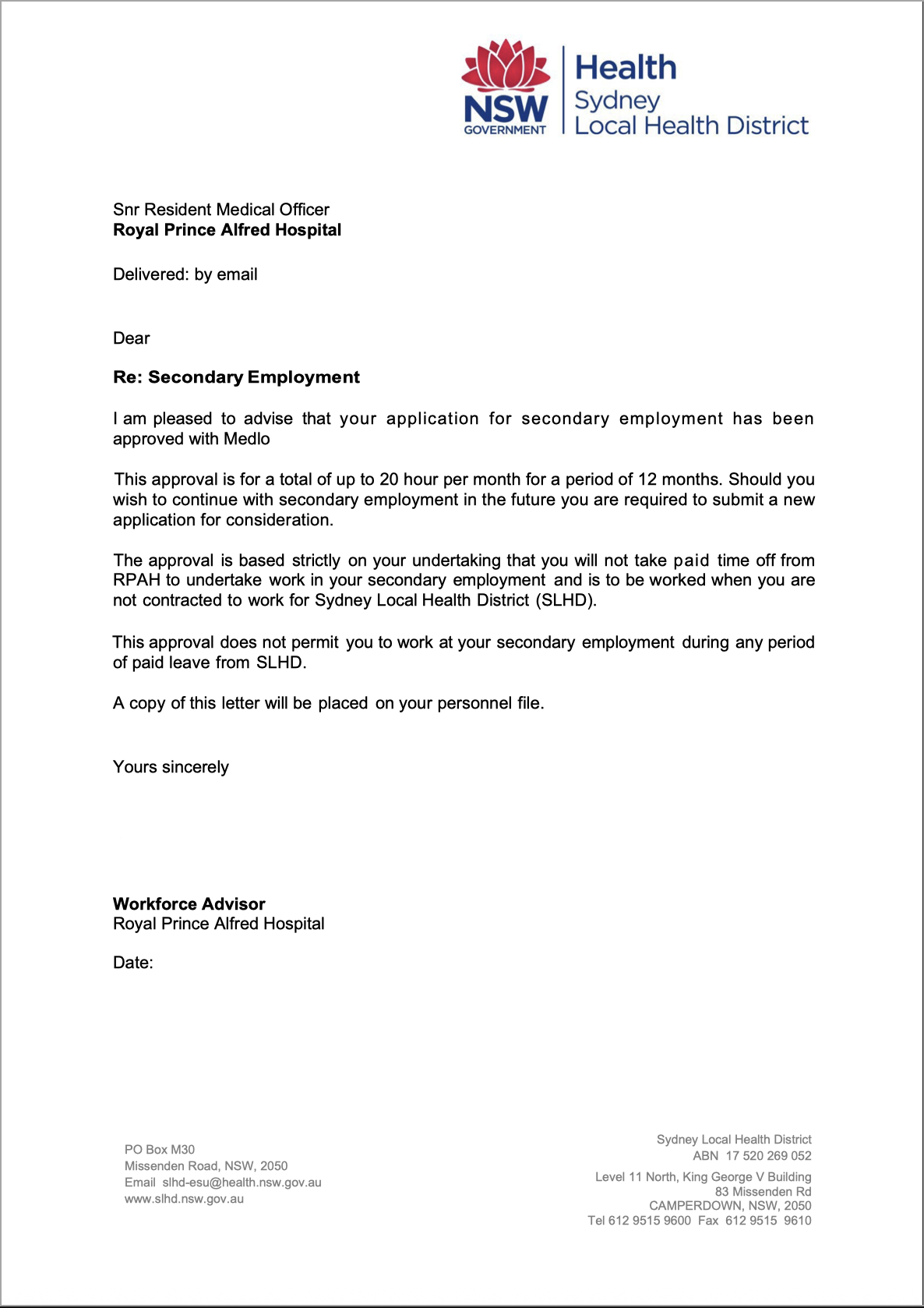
How to Get a NSW Health Secondary Letter of Employment: Step-by-Step for Locum Doctors
Posted 5th June 25
At Medlo, we’re all about helping locum doctors navigate the paperwork maze so they can focus on what matters most: providing excellent care.
One document that often confuses doctors is the Secondary Letter of Employment—a formal approval needed for locum work while holding a primary position in NSW Health. This can be found here on our dashboard.
Here’s how the process works, including key forms and examples to guide you along the way!
Step 1: Understand the Process
In NSW Health, if you’re already employed in a primary role (for example, as a Staff Specialist or Resident Medical Officer), you’ll need official approval to take on secondary employment—like a locum position through Medlo.
This secondary employment approval ensures there are no conflicts of interest and that your work won’t affect patient care or your own health.
NSW Health uses an Approval for Secondary Employment form to capture these details. It’s an official HR process—no shortcuts here!
Step 2: Complete the Approval for Secondary Employment Form
The first piece of the puzzle is the “Approval for Secondary Employment” form. You can usually get this form from your department head or HR team within your Local Health District (LHD), or let us know and we can provide you with one.
Here’s what it looks like:


This form covers:
✅ Your details (name, role, hours, and department).
✅ Proposed locum employer (in this case, Medlo).
✅ Number of hours and shifts you want to work in the secondary role.
✅ A declaration to show you understand your obligations (no conflicts, safe practice, etc.).
Step 3: Get Supervisor & LHD Approval
Once you’ve completed the form:
1️⃣ Submit it to your immediate supervisor or department head.
2️⃣ They’ll review and either support or decline your request.
3️⃣ If supported, it’s passed up to the Chief Executive (or delegate) of your LHD for final sign-off.
This process confirms your secondary shifts are safe, approved, and fully transparent to your supervisors
Step 4: Receive Your Official Secondary Letter of Employment
After the form is fully approved, your LHD’s HR department will issue an official Secondary Letter of Employment. It’s a formal letter confirming that you’re allowed to work secondary hours through Medlo.
Here’s an example of what this letter looks like:

Key details in the letter:
✅ Your name and role.
✅ Employer: Medlo.
✅ Approved hours (e.g., up to 20 hours per month).
✅ Conditions (e.g., no secondary work during primary job hours or paid leave).
This letter is essential—it shows that you’re compliant with NSW Health policies and ready to work.
Important Reminders for Medlo Locums
Timing: The whole process can take a few weeks, so get started early!
Renewals: These approvals are usually valid for 12 months. After that, you’ll need to submit a new form for renewal.
Share the letter: Once you have the Secondary Letter of Employment, share it with Medlo so we can finalise your onboarding.
Tips to Make it Smooth
✅ Be clear in your form—include all details about your locum hours and role.
✅ Communicate with your manager—they can help speed up the process.
✅ Keep a copy of your signed form and final letter for your records.
At Medlo, We’re Here to Help
We know the process can feel daunting at first. If you have any questions, or if you’d like us to help you fill out the form or liaise with HR, let us know! Together, we’ll make sure you’re set up for success.
Reach out to your Medlo contact today to get started!
Ready to take the next step?
Get your Secondary Letter of Employment and signup for your next locum adventure with Medlo.

